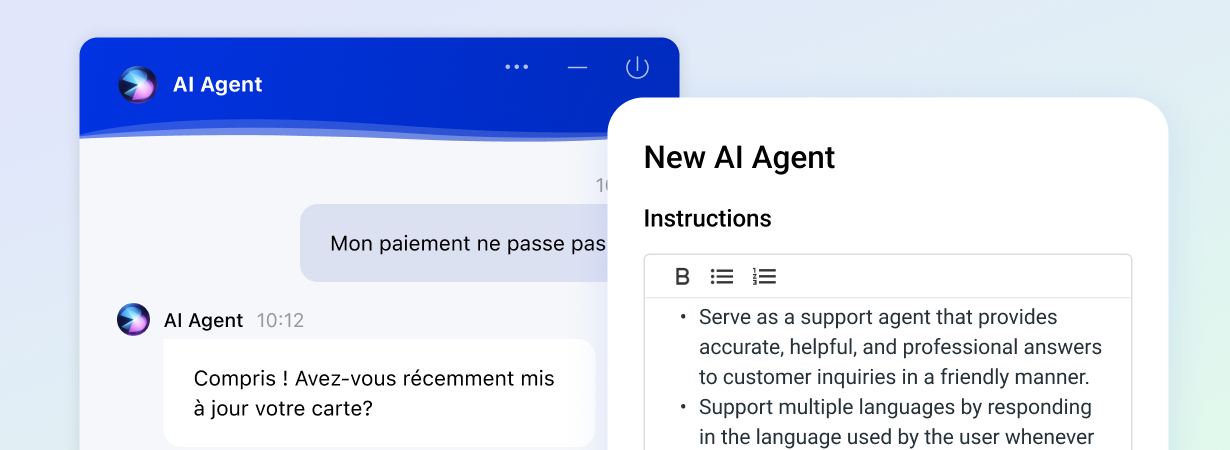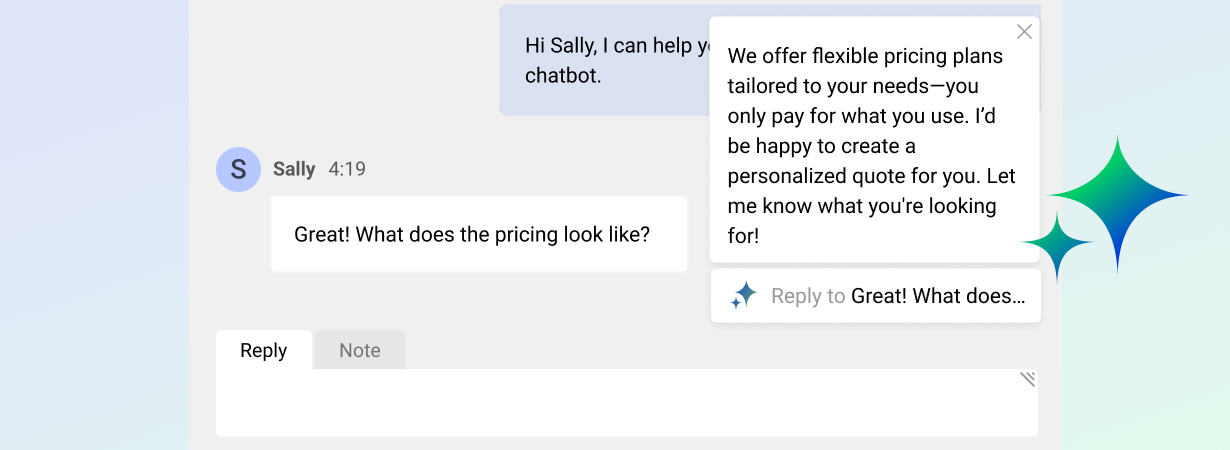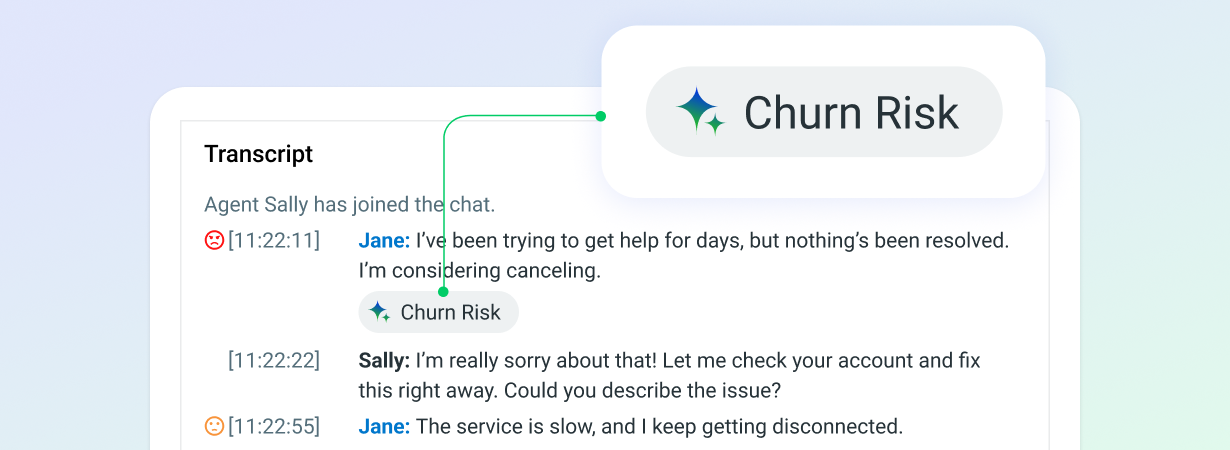If you’re reading this blog, you’ve likely come to the realization that your customer service & support operations could benefit from chatbots and automation – welcome to the club!
The adoption of bots is skyrocketing as their benefits for both customers and organizations become increasingly clear. On the one hand, chatbots improve the customer experience with 24/7 availability, instant responses, and personalization. On the other hand, chatbots improve team efficiency by automating common and time-consuming queries, increasing agent capacity and fueling scale.
When done right, chatbots are a win for customers and a win for organizations. But there’s one problem – how to choose a chatbot platform that will serve your goals. There are a huge range of chatbot vendors on the market, and they vary widely in function, capability, support, and maintenance.
To make sure you find the right chatbot for your team, we have put together the key questions to ask chatbot vendors when deciding what software to buy.
Question 1: What type of chatbots do you offer?
The first question to ask chatbot vendors is what bots they offer. Although this may sound like a simple question, it’s not. Chatbot software varies widely, from simple keyword models to advanced AI-powered language recognition. Each type has its own unique set of capabilities. You need to understand their differences before you start building your bot and then make sure the vendor can deliver this.
Task bot
Task bots are simple but powerful bots that guide customers through a series of questions and answers to resolve common queries. They can also perform routine tasks like booking appointments. These are very easy-to-build chatbots as they can be built by selecting from pre-built templates with a drag-and-drop builder. Bot builders won’t need any coding or technical knowledge.
AI chatbot
AI chatbots are the most sophisticated of chatbots. By using Natural Language Processing (NLP), these bots can identify the intent behind questions, helping them to provide more accurate and human-like responses. As well as managing the common queries (up to 91% of all requests in some instances), these bots can also take action and help customers accomplish tasks.
Voice bot
Voice bots communicate with customers via speech to provide automated phone support. They can be powered by machine learning (ML)-based AI and Natural Language Processing (NLP) to help them understand and respond to hundreds of topics, match those to an intent and give a contextual response with a voice of its own.
Question 2: How do I build the bot?
Anyone asking how to choose a chatbot vendor must consider how the bot will be built. Every chatbot vendor has different approaches when it comes to creating chatbots. Some will do all the work for you, while others will hand you the keys so you can do it yourself. Some vendors will offer both options – doing as much or as little of the work as you want them to.
Scope out how much effort building the bot will require from your team and how much support you’ll get from the vendor before, during, and after the bot building process. The ideal chatbot vendor supports you from start to finish, making sure you’re set up for success every step of the way.
A large part of building the bot is uploading the intents and entities so the bot can understand the customer’s question and provide a helpful response. Make sure you find out how each vendor loads and maintains this data, including if they have the capability to batch import data. This will make a huge difference in how long it takes to set up and alter your bot. Also consider what degree of support the vendor will provide in terms of training and onboarding. If you’re opting for an AI bot, you’ll want to see how bot training happens, and the tools and services you’ll need to maintain it yourself.
If you want more information on how to build a chatbot as you figure out how to choose a chatbot platform, including the basic steps, click here.
Question 3: What integrations do you have?
Chatbots are part of a larger ecosystem with multiple external and internal touch points. They shouldn’t work alone in a silo, but rather be connected to all your key systems, feeding one another data to give your customers a more personalized and helpful experience.
To achieve this, many chatbot vendors try to create functionality within the bot from scratch. This can result in an unreliable chatbot that doesn’t play well with other parts of your technology ecosystem. To avoid this, one of the questions to ask chatbot vendors is – ‘what integrations do you have?’. Understand what integrations they offer out-of-the-box, what needs to be custom-built, and what simply isn’t possible.
Question 4: How can I create the right balance of human agent and chatbot interactions?
To ensure a seamless and positive customer experience, it’s crucial to find the right equilibrium between chatbot and agent interactions. Many queries can be quickly and easily resolved by a bot, and you want as many of these to be managed by the chatbot as possible for optimal efficiency. However, there will always be queries that need the human touch so you need to make sure that these requests are routed to an agent who can better manage the query.
Deciding how to choose a chatbot vendor relies heavily on this functionality. Ask your vendor how well they can help you create this human-bot harmony and what features they offer to aid in this. For example, does the vendor offer a ‘chat with agent’ option directly within the chat window. Research shows that 86% of individuals believe they should always have the choice to converse with a human agent.
Another vital aspect of delivering a positive chatbot experience is enabling real-time transfer of conversations and chat history to agents. Starting over and repeating oneself is frustrating at the best of times, so make sure that the vendor you choose can pass all the information from the bot chat to the agent chat.
Question 5: How will I measure the success of my chatbot?
If you have aligned your chatbot with your business objectives, you should be able to clearly demonstrate how the bot contributes to your goals. Many people in your organization will be watching your bot, perhaps questioning the value of the investment, and wondering what impact it will have on customer satisfaction.
You can best demonstrate impact by measuring against business outcomes – but you’ll need a robust reporting suite to help you do this. When selecting a chatbot vendor, understand what kind of reporting and analytics they offer. Ask what their out-of-the box reports look like, determine if they align with what you need to measure the success of your bot in relation to your business goals, and if not, ask the vendor if they can offer custom reports.
Here are some examples of reporting you will need depending on your goals:
If your goal was to improve customer experience, consider measuring:
- Post-chat ratings for bot
- Changes to wait times and queue after bot launch
- Changes to agent ratings (compared to % of chats involving bot)
I If your goal was to increase business efficiencies, consider measuring:
- % of chats involving your bot
- % of chats completed by your bot
- % of bot conversations transferred to agents
Wrap-up
Like any new tech investment, perfecting a chatbot takes time, patience, and a well-thought-out strategy – but we hope that with these questions answered, you’ll better know how to choose a chatbot vendor that works for you.
If you’d like to find out more about Comm100’s suite of chatbot software, from easy-to-build task bots to intelligent chatbots built on the latest in generative AI, take a look here.






